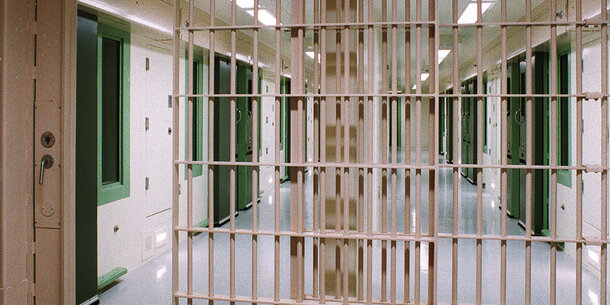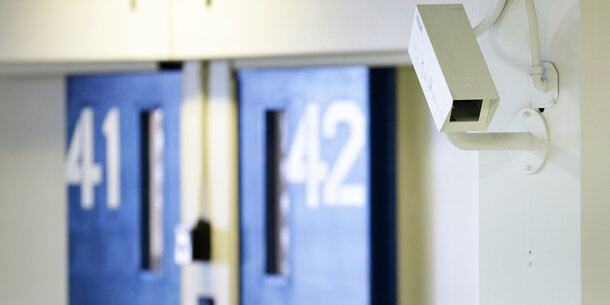You’re reading The Briefing, Michael Waldman’s weekly newsletter. Receive it in your inbox.
Most weeks, this newsletter focuses on national politics — on the constitutional emergency, Donald Trump’s power grabs, and the battle for checks and balances. In this Briefing, I want to tell you about something closer to home. It’s a small bit of hope that may untangle a persistent human rights crisis taking place within full view of Manhattan.
Rikers Island is a century-old jail complex on an island sandwiched between the Bronx and Queens in New York City. It’s home to 10 city jails, where you will find violence, chaos, and even death. This year alone, five people have died at Rikers or shortly after their release.
The troubles at Rikers are hardly a secret. In recent years, the city’s government faced lawsuits over cruel treatment of those incarcerated there, including failure to provide adequate medical care, inhumane living conditions, and repeated neglect of people in the jails. Authorities were accused of violating court orders several times, leading to a standoff between the city and the courts over conditions. Mayors pledge to close Rikers, city councils pass resolutions, commissions issue reports. A plan to build smaller jails in other parts of the city has foundered. And on and on.
That situation led a federal judge to temporarily strip the city’s authority over Rikers Island last Tuesday. She took steps to appoint an independent expert, effectively a receiver, to oversee the complex and develop a plan to bring it into compliance with the law. Chief Judge Laura Taylor Swain said that the overseer would be “empowered to take all actions necessary,” presumably including staffing changes and major policy reforms.
Such receiverships are extreme measures taken when a judge determines that a prison or jail has persistently violated court orders aimed to protect constitutional and civil rights. My colleague Hernandez Stroud was one of the first to call for a receivership for Rikers Island, and we have urged court intervention since 2021. As we pointed out then, a receivership goes beyond the more common naming of a monitor. The overseer has the power to run the jails — to hire, fire, petition the court to waive state and local laws, and make day-to-day decisions. The judge in her ruling made clear that the new official is “empowered to take all actions necessary.”
Receiverships date back to 1600s England under Queen Elizabeth I and were used to secure and protect land. Centuries later in the United States, courts used the tool to manage insolvent railroads. Later, judges applied it to take control of public schools that resisted desegregation mandated by Brown v. Board of Education. But it has only been used to take over jails and prisons 13 times in the country’s history.
This decision reflects New York City’s political paralysis. It also testifies to the importance of the rule of law: Even people behind bars, among the most powerless in our society, are entitled to basic human dignity, and courts are duty bound to ensure that the government observes their rights. But what impact will it have?
Hernandez Stroud wrote to me: “A question I often get: What can receivers do that a political leader, like a mayor or corrections commissioner, can’t? Because receivers answer only to the judges who appoint them, receivers are insulated from politics. That freedom from political pressure enables receivers to make decisions that may not be politically popular. So in prior cases: Receivers have implemented new policies and practices; developed higher standards for staff and required new training; hired and fired staff and introduced accountability staffing structures; ordered infrastructure changes; cut through bureaucratic red tape to acquire the most basic of equipment to run a jail: locks for cell doors; petitioned courts to waive state or local laws impeding constitutional compliance; and even trimmed jail and prison populations when overcrowding has been the primary driver of poor conditions.”
He continued: “Receivership is not a magic wand; it will not eliminate all the jails’ many shortcomings. The million-dollar question is whether the government, when it regains control of the city jails after this receivership terminates, will fully commit itself to ensuring basic human dignity or backslide into the same patterns and approaches that motivated this ruling in this first place.”
There’s a broader question about the role of the courts. It has proven highly difficult for judges to run school systems, prisons, and other complex governmental institutions where trade-offs abound, public attitudes can be fickle, and funding can determine results.
On one hand, receiverships can serve as a strong check on local institutions and a necessary bulwark against continuous constitutional violations. For those incarcerated at Rikers, the court’s move reaffirms that their constitutional rights must be protected.
On the other hand, receiverships are essentially last-resort checks on democratic institutions that have failed to uphold their civic duties.
But as the Supreme Court has said, a receivership “is not an end in itself.” It is temporary and will not cure all that ails the jails. The problems with New York City’s jails reach back across decades. Five prison commissioners have trooped through Swain’s courtroom since she began handling this case. Yet this order provides some hope.
In fact, prison conditions are an area of growing bipartisan focus. The Brennan Center is doing exciting new work on prisons all across the United States, public and private. That will take real legislative solutions, including increased accountability for corrections officers along with building safer environments for those who are incarcerated and those who work in our nation’s prisons. New York City must eventually act to ensure that Rikers Island — a stain on the city I know and love — protects the civil rights of those who enter its doors. Until then, we must continue to advocate for enduring reforms to our criminal justice system, for lives are at stake.



